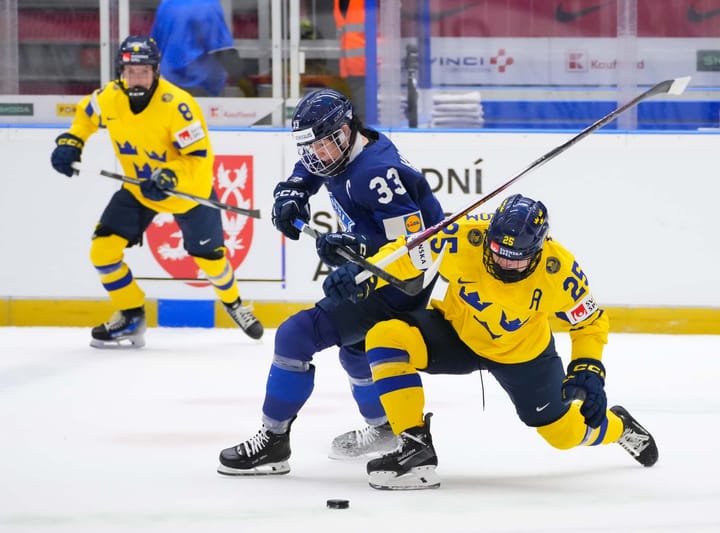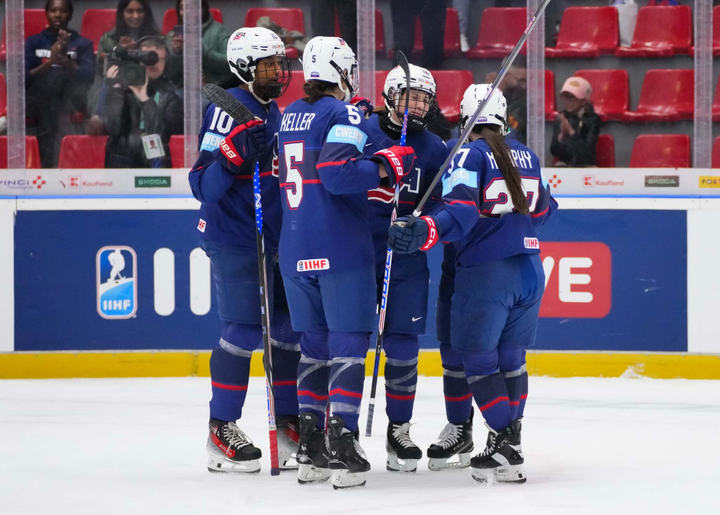The CWHL folded - now what happens to women’s hockey in Canada?
You’ve got questions, we’ve (kind of) got answers
In the few days since the Canadian Women’s Hockey League announced they would be shuttering, there seem to be more questions than answers. Let’s take a look at some of the most frequently asked questions and try to answer a few.
Related
CWHL to cease operations on May 1, 2019
The league itself is dissolved, but what happens to the teams, the merchandise, all of that?
Honestly, I don’t know. And I’m not sure if anyone really knows for sure. The teams were owned by the league, so one would assume the logos were as well. There’s a larger question about trademarks and copyrights of the logos that someone much smarter than me will know the answers to.
Teams are still selling merchandise online, or what was left of their inventory.
So are the teams just gone forever? Or could individual teams move to the NWHL or an independent league?
Representatives from multiple teams have expressed that the teams aren’t going anywhere. Kristen Hagg, general manager of the Inferno, told Mike Murphy at Sporting News she has every intention of keeping women’s hockey in Calgary. Les Canadiennes de Montréal, the Toronto Furies, and the Markham Thunder have all released similar statements, and many players have taken to social media with a similar message.
According to The Star, an anonymous group in Toronto has already started the “legal paperwork to start a women’s league” in the wake of the CWHL news. But before they move forward, they’re waiting to see what the NWHL does.
It’s not clear whether or not the NWHL could handle adding other teams. To be frank, I’m not sure how that would work. The US-based league might not be able to financially handle the hurdles that would come along with expansion.
Is the NWHL not in a good position then either?
I’m not saying the NWHL is going to cease operations suddenly too. But they’ve had their fair share of ups and downs in their four-year history, and this past 2018-19 season was the first time one of their teams turned a profit. They’ve had issues paying players in the past and issues with visas. Add in a large crop of Canadian players and it could further destabilize the league.
However, the NWHL did tell Hailey Salvian of The Athletic that they were looking into it.
A source who requested anonymity told The Athletic that the NWHL will “absolutely” look at adding one or two Canadian teams for next season, with the top options being Montreal and one of the Greater Toronto Area teams due to cost and travel considerations.
If the history of women’s professional sports has shown anything, it is that expansion needs to be done very carefully.
How is the NHL involved or not involved?
Toronto, Montréal, and Calgary all had partnerships with their respective NHL organizations for a while. These partnerships ranged from financial support to marketing support. The CWHLPA had a partnership with the NHLPA as well. There are also reports that the NHL gives the same amount of financial support to both leagues.
As a whole league, however, the NHL has never expressly endorsed one league. In fact, they’ve gone out of their way to say they will not step in while there is a viable option for professional women’s hockey. In short, the NHL wants to be in control of women’s hockey, which — for numerous various reasons that are their own article — is not great.
Why now after 12 seasons?
There’s a few schools of thoughts here.
Liz Knox, in an interview with The Ice Garden, described the league as a hamster wheel. Everyone is working hard but they are just spinning a wheel with no discernible progress.
Related
The legal reality of #OneLeague
Another is that this is the first step is creating #OneLeague. The CWHL was a non-profit organization while the NWHL is a for-profit organization, which made it legally impossible to merge them as-is.
One more point: A league folding is not a productive step towards growth unless that growth plan has been carefully, collaboratively established and the trajectory is already clearly in place. I do not know whether that is the case here, but if it is, they're sure hiding it well.
— Kirsten (@kmtwhelan) March 31, 2019
The CWHL dissolving could be a step towards making #OneLeague easier. However, based on the NWHL and NHL’s reaction, this wasn’t done as part of a greater #OneLeague plan - at least, not one that was planned ahead of time.
There’s another professional league in North America and numerous others in Europe. Can’t the players just go there?
No.
Let’s look at it from the players’ perspective first. No league is paying livable wages, or even close to it. The CWHL began paying players in 2017-18 with salaries between $2,000 and $10,000 based on service time. The NWHL has paid players since the beginning; however, they cut salaries partway through the 2016-17 season (their second season). Currently, they pay between $5,000 and $7,000. Those are not per game or per month — those are for the entire September/October to mid-March season.
Because of this, nearly every player in women’s hockey works a full-time job. Players sign with a team based on where they have off-ice opportunities. It’s not feasible — or even possible in many cases — for players to move cities, let alone countries, to play in the NWHL (or to move continents for the European leagues). They’d have to give up careers they’ve been working towards or jobs that allow them the flexibility needed to be a women’s hockey player in this economic climate.
From a league perspective, there’s the issue of visas, foreign transfer fees, and import limits. Women’s hockey, with its small and sometimes inexperienced front office staffs, has long struggled with obtaining visas for players. Foreign transfer fees can severely hurt budgets, especially when a league forces the teams to pay as the SDHL recently did. Import limits, which the CWHL had, can make signing international players tough.
And then there’s the roster limits. No matter how you look at this, there’s now a significantly larger number of players than there are roster spots. In a press conference in Calgary, Dakota Woodworth mentioned that no league in the world could absorb the more than 125 now-former CWHL players. Even if the NWHL does expand — something they’ve told The Athletic they are looking at doing — they could only feasibly add another 50 roster spots. If the current NWHL teams do look to add Canadians from the CWHL, that will cause different players to be cut and essentially be left without a league.
Even if those plans do play out positively, women’s hockey is most likely going to see a lot of skates hung up far too early.





Comments ()